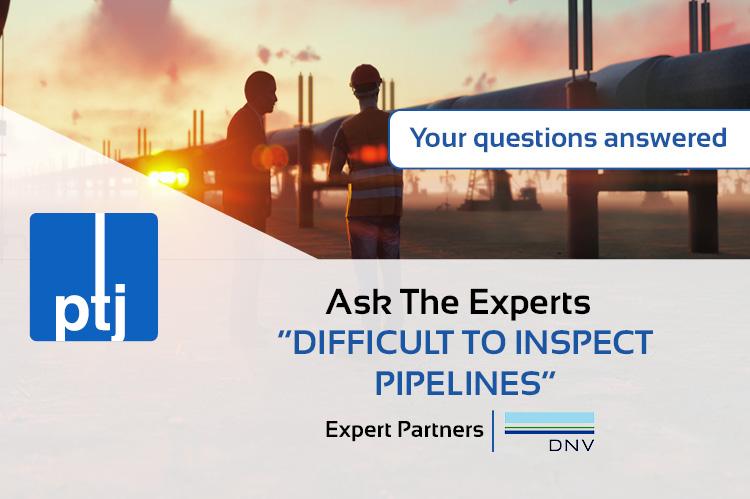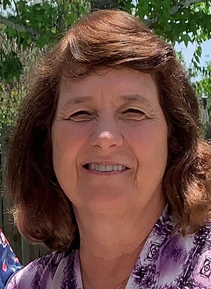[Ask the Experts] Your Questions about Difficult to Inspect Pipelines answered

Q1) All difficult to inspect lines require some openings to insert/ retrieve the tool. Creating that provision is challenging. Which method is most economical and provides optimized results?
Alex Woll: There’s no one answer to this question. Tool type and future inspection plans play a big role here. If this is a one-time run of a tethered crawler, all you need is a single opening on the line to set the crawler in. If this is a line that’s going to be continually assessed and requires cleaning pig maintenance, it’s probably best to install permanent traps that are sized to support the longest expected ILI technology. If there are a set of similarly sized OD lines that don’t need frequent cleaning pigs and are only planned to be inspected once every five to seven years, then you might save a little bit of money by moving around a set of temporary traps whenever they’re needed.
Pamela Moreno: By utilizing only one drop-out spool, installing a single-entry, a tethered bi-directional high-resolution in-line inspection smart pig can be economical and provide optimized results.
Q2) What are the constraints on a pipeline when determining piggability?
Alex Woll: Constraints to determining piggability can be classified into three categories: Physical, operational, and product related.
Physical constraints: The common physical constraints include undersized traps for intended tool technology, multi-size-OD pipeline, reduced port valves, back-to-back 1.5D bends (or any bends that the tool cannot traverse), or gauge plate reveals, minimum OD might be less than tool requirements, etc.
Operational constraints: A low-pressure gas system doesn’t have pressures to support tool movement which leads to inability to control operating conditions to keep the tool within its necessary operating parameters. For gas lines, bypass can be introduced or liquid slugs can be used but speed excursions can still be challenging to mitigate under tough operating conditions.
Liquids lines are usually more predictable and consistent in terms of speed but scheduling movements large enough to allow your run to complete may take some planning.
Product constraints: If hydrogen is blended into the natural gas or it is a sour service line, it can adversely affect the ILI tool. It is recommended to ensure the tool can is compatible with the commodity.
For liquids, ferrous metals and other elements can interact with the tool sensors to cause interference. Adequate pre-lining of the line or running magnetic cleaning pig through the lines will help reduce interference.
Q3) What is better to inspect a backup line for river crossing pipelines? For e.g. a backup line has not been used since construction in 2008. This line is 1110 in length, crosses under a riverbed, is 12" in diameter, grade X-65 ERW. 8.7 mm thickness, and 3 LLP Coating. Is it better to use a pressure test? Or a smart test? Assume that the line does not have permanent pigging facilities.
Alex Woll: This depends on what you want to get out of the inspection. The pressure test will confirm that the line can handle the operating conditions today. You can calculate the maximum remaining crack size and minimum existing wall thickness from the pressure test. A smart tool will give you more detailed inspection information within a set of performance criteria. For example, if you run a DEF-MFL-XYZ, you can understand if there are any dents or metal loss features in addition to where on the crossing they are (both distance and orientation). Additionally, you can understand from the XYZ tool how deep the line is buried and compare that with the river bottom profile if erosion is of any concern.
Pamela Moreno: Again, a one drop-out spool, installing a single-entry, a tethered bi-directional high-resolution in-line inspection smart pig can be used and would provide information of non-critical defects that can be monitored in future inspections. A pressure test would most likely be more economical as an assessment; however, it would only identify critical defects. Locating a failed defect, direction examination, and repair would likely be difficult for a river crossing line.
Temporary traps can save money over permanent traps and may be able to be used for a short time when there is not space for permanent traps.
Q4) Does unpiggable also mean that the tool can be run but cannot inspect the whole line?
Pamela Moreno: A line would not be unpiggable just based on length of line. Multiple runs using a timer could gather the extra data beyond what the first pig could record if the whole line is piggable.
Q5) Where is the greatest amount of future investment likely to be - in sensor tech or analytical software?
Pamela Moreno: I think sensor technology. Sensors with higher resolution to detect and measure anomalies for complex corrosion, pin hole and crack-like features. That said, analytical software seems to keep up well with the development of sensor technology.
Q6) How successful is Barkhausen noise technique and is it applicable for gas or both (gas & liquid) and areas of application?
Alex Woll: I’ve never used MBN but I’ve heard of it being used for material identification, stress analysis and weld inspection. From my understanding, it operates using magnetic properties. Unless the commodity has ferrous metals in it, I wouldn’t see any reason for the product to matter.
Q7) What alternatives to ILI do you recommend for pipelines in difficult terrains?
Alex Woll: If the terrain is an issue and it is hard to get from one above ground monitor (AGM) to the next, pre-set boxes can help ensure the passage is recorded on all AGM locations and having enough people will help leapfrog locations without missing the tool passage. Good planning is key to the success of such programs.
Got more questions about Difficult to Inspect Pipelines? Want to speak to an expert at DNV or know more about our solutions? Submit your queries here or write to us at digital@dnv.com
The Experts
Alex Woll, Pipeline Risk Team Lead, DNV
Alex Woll worked as a risk and integrity engineer with major gas and liquid operators before joining as part of the Pipeline Risk Team. He has substantial experience implementing different risk model types and forming different IMP approaches around risk and PMMs as they fit into the larger integrity program. Alex’s day-to-day is focused on driving risk modelling innovation to better support integrity decision making.
Pamela Moreno - Principal Consultant - Pipeline Integrity, DNV 
Ms Moreno has more than 35 years of experience in the pipeline industry with her current role being to assist clients in developing their Pipeline Integrity Management Programs and their ILI programs. Prior to joining DNV, she successfully led teams of ILI analysts for several ILI vendors. Ms Moreno has extensive experience conducting advanced data analysis of ILI runs, evaluating both enterprise risks and the individual risks of pipeline segments based on multiple integrity threats and data sets, and
assisting with regulatory compliance and acting as an expert
witness in litigation issues.

